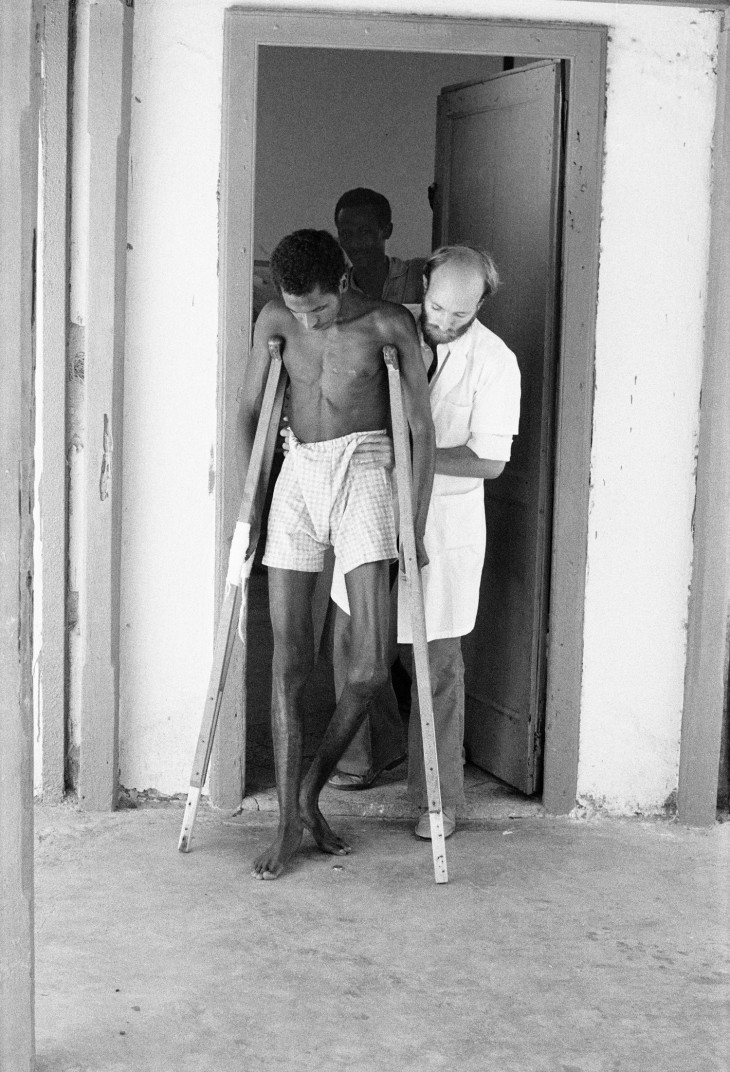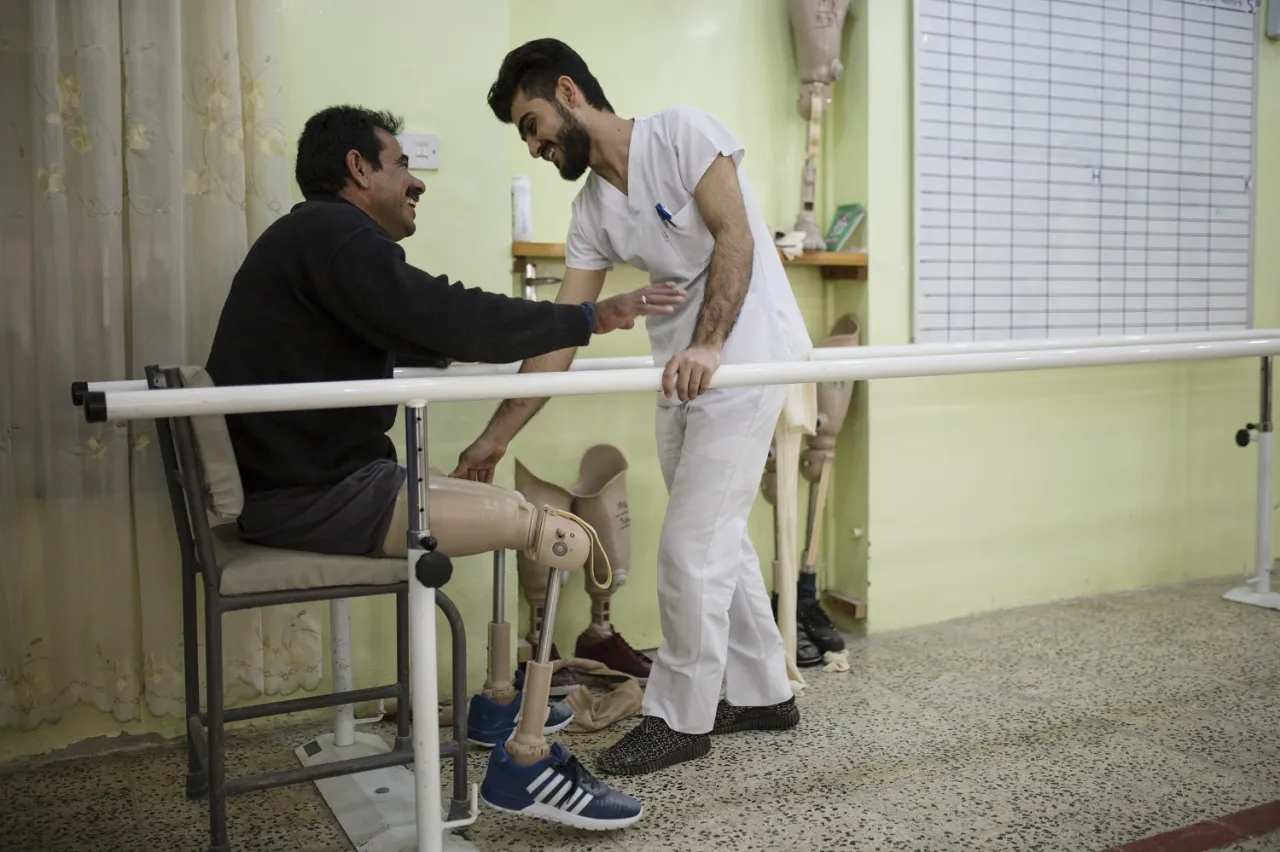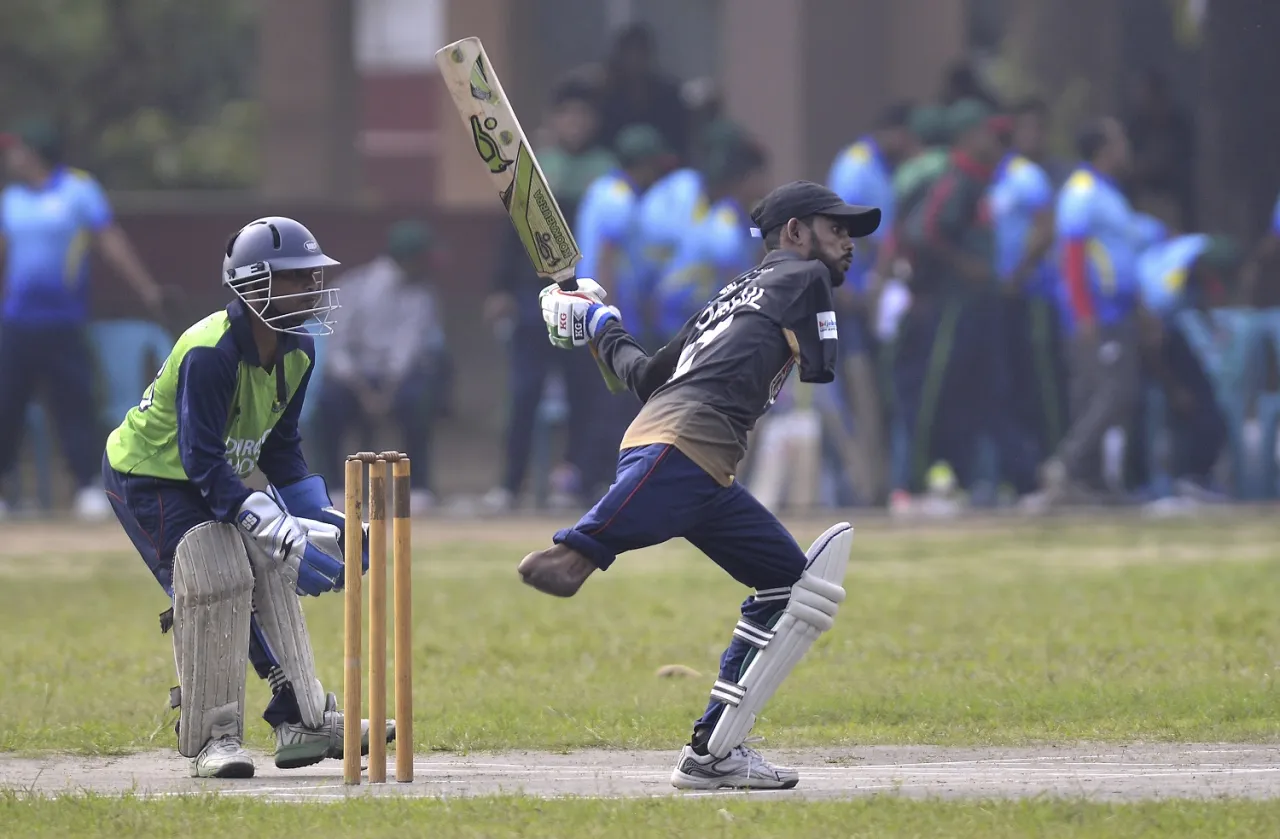From rehabilitation to inclusion

The Physical Rehabilitation Programme was set up in 1979. Although the ICRC had previously carried out some physical rehabilitation activities, the programme’s creation marked the beginning of a major commitment to helping people with physical disabilities enjoy the highest-possible quality of life.
Supporting the physical rehabilitation of people with disabilities
The Physical Rehabilitation Programme was set up to support the physical rehabilitation of victims of armed conflict and other violence. Initially this meant providing disabled people with mobility devices, such as prostheses (artificial limbs), orthoses (supports for existing limbs that do not work properly) or wheelchairs.

1979 – A physical rehabilitation centre in Somalia. Photo: Rémi Russbach
Since then, our physical rehabilitation work has greatly expanded. We now carry out consultations with patients before and after they receive their mobility devices, helping them learn how to make the fullest use of the devices and achieve greater independence. And we emphasize educating and building the skills of physical rehabilitation professionals to ensure our initiatives' long-term success.
The ICRC is now a leader in the field of physical rehabilitation owing to our expertise and activities around the world, the technology we have developed to produce high-quality prosthetic and orthotic devices at low cost and our lasting commitment to the centres we support.
From rehabilitation to inclusion
In our work, we aim to strengthen local physical rehabilitation services by making them more accessible, improving their quality and ensuring they continue over the long term.

Juba, South Sudan. A former patient of the ICRC physical rehabilitation centre takes care of the garden surrounding the centre. Photo: Florian Seriex
Making physical rehabilitation services more accessible
What does it mean for physical rehabilitation services to be accessible?
• The services exist, and the people who might need them know they exist and how to get to them.
• Everyone has equal opportunity to make use of them, without discrimination, and the services are affordable without compromising on quality.
• The buildings are accessible and as close by as possible, and people can get referred to other physical rehabilitation specialists.
To improve access to physical rehabilitation, we take a two-pronged approach: supporting both the health-care system, ensuring the means are there to provide proper services, and its patients, ensuring they can get the physical rehabilitation they need.
Improving the quality of physical rehabilitation services
We work to improve the quality of physical rehabilitation by training up local health-care professionals, bringing in specialists to support them, improving our technology for producing prosthetic and orthotic devices, creating and instituting treatment guidelines and promoting a multidisciplinary approach to patient management.
We initially imported materials and machinery to produce devices and components in developing countries; later on we developed a unique, polypropylene-based technology for more affordable devices and components, which is now widely used.
In 2019, in collaboration with the Swiss Federal Institute of Technology in Lausanne, we launched the Agilis project to develop an innovative, low-cost prosthetic foot. Cutting-edge prostheses are often prohibitively expensive for people in developing countries, and the devices are ill-suited for walking on rugged terrain. The new prosthesis is specifically designed to suit the places where we work.

Erbil, Iraq. A man who lost his legs when he drove his car over a landmine in Mosul in 2014 is being assisted by a physiotherapist after he got prosthesis from ICRC orthopaedic center. Photo: Saara Mansikkamäki
Ensuring long-term sustainability
To ensure that services continue over the long term, we promote training for health-care professionals. We also work in close cooperation with local partners, develop patient-management tools, support the work of local groups coordinating physical rehabilitation services and promote the development of national policies on providing these services.
Our projects are designed to strengthen existing physical rehabilitation services, so we generally support local authorities and organizations that provide them. In some cases, though, we may step in to offer the care that local authorities cannot provide – but always with a view to ensuring that services continue once we depart.
Helping people with disabilities reintegrate into society
To help people with disabilities fully reintegrate into society, we and our local partners organize initiatives that encourage social, educational and professional growth. These include sport activities, academic scholarships and homeschooling, microfinance programmes, job opportunities and more to help disabled people engage with their communities and, ultimately, to foster more inclusive societies.

Dhaka, Bangladesh. The ICRC organizes a cricket tournament for people with disabilities. Photo: Sourav Lasker
Our vision for the future
Over one billion people live with some form of disability, about 15% of the world's population (WHO, 2011). An increase in armed conflicts and other violence around the world has contributed significantly to the rising number of people with disabilities.
Physical rehabilitation services are essential to disabled people's full reintegration into society. Enabling someone to walk or move again is a crucial first step towards ensuring they can earn an income or receive an education, take part in their community and fulfil their potential. As most physical disabilities are permanent, many disabled people will need some form of physical rehabilitation for the rest of their lives if they are to continue playing an active part in society.
Providing people with physical rehabilitation services is a long-term commitment. By their very nature, these are complex, and people often require assistance for many years. Through our work with our partners and local authorities and with the support of our donors, we can get people back on their feet and back into their communities.



